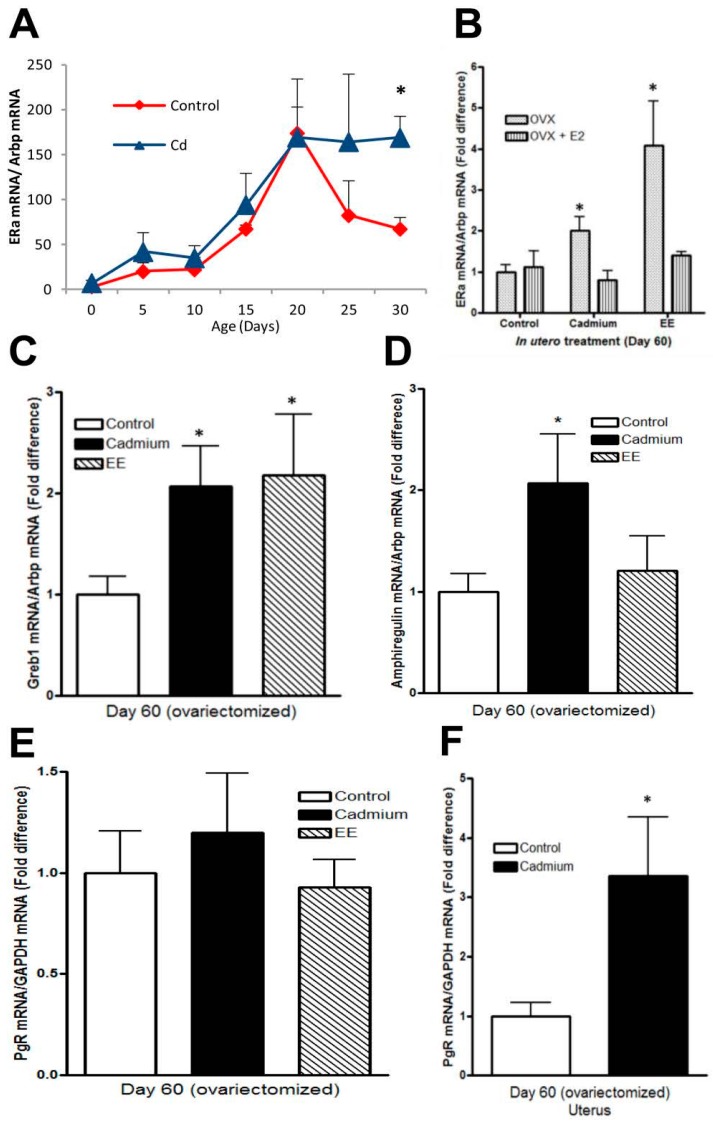Figure 4.
Effects of in utero exposure to cadmium on gene expression of ERα in the female offspring. Pregnant female rats were treated with cadmium (5 μg/kg bw) or ethinyl estradiol (50 μg/kg bw) as described in Figure 1 and the female offspring were examined. (A) In utero effects on ERα expression in the prepubertal mammary gland. The amount of ERα mRNA was measured on postnatal days 0, 5, 10, 15, 20, 25, and 30 by qRT-PCR assay and normalized to Arbp mRNA (mean ± SEM; n = 3–11 offspring/group; * p < 0.05); (B) in utero effects on the regulation of ERα in the adult mammary gland. Female offspring were ovariectomized on postnatal day 45. Beginning on postnatal day 56, the animals were treated daily with 17β-estradiol. On postnatal day 60, the amount of ERα mRNA was measured by a qRT-PCR assay and normalized to Arbp mRNA. Data are presented as fold difference (mean ± SEM; n = 7–11 offspring/group; * p < 0.05); (C–E) in utero effects on gene expression in the adult mammary gland. Female offspring were ovariectomized on postnatal day 45. On postnatal day 60, the amount of Greb1 (C), amphiregulin (D), and PgR (E) mRNA was measured by a qRT-PCR assay, normalized to Arbp mRNA, and presented as fold difference (mean ± SEM; n = 7–11 offspring/group; * p < 0.05); (F) in utero effects on progesterone receptor expression in the adult uterus. Female offspring were ovariectomized on postnatal day 45. On postnatal day 60, uteri were excised and the amount of PgR mRNA was measured by a qRT-PCR assay, normalized to GAPDH mRNA, and presented as fold difference (mean ± SEM; n = 7–11 offspring/group; * p < 0.05).

